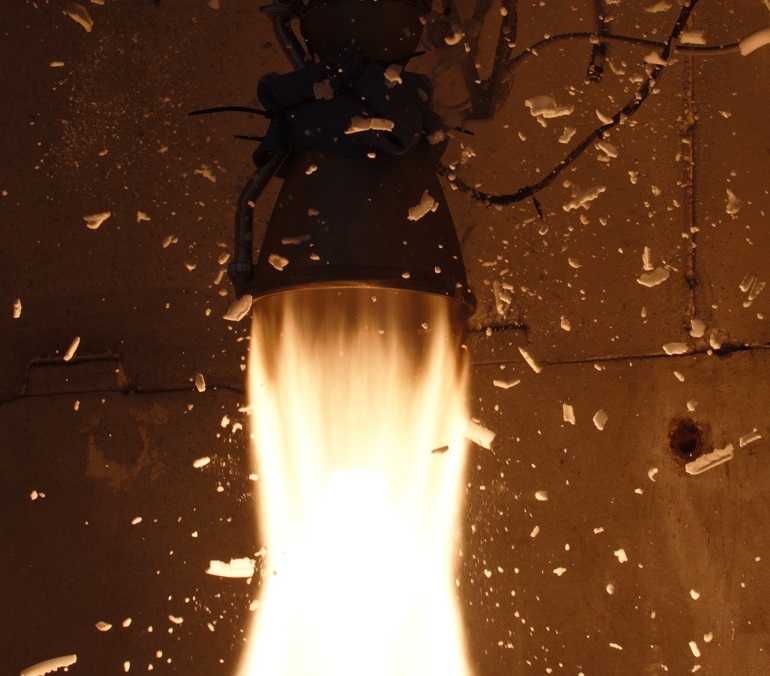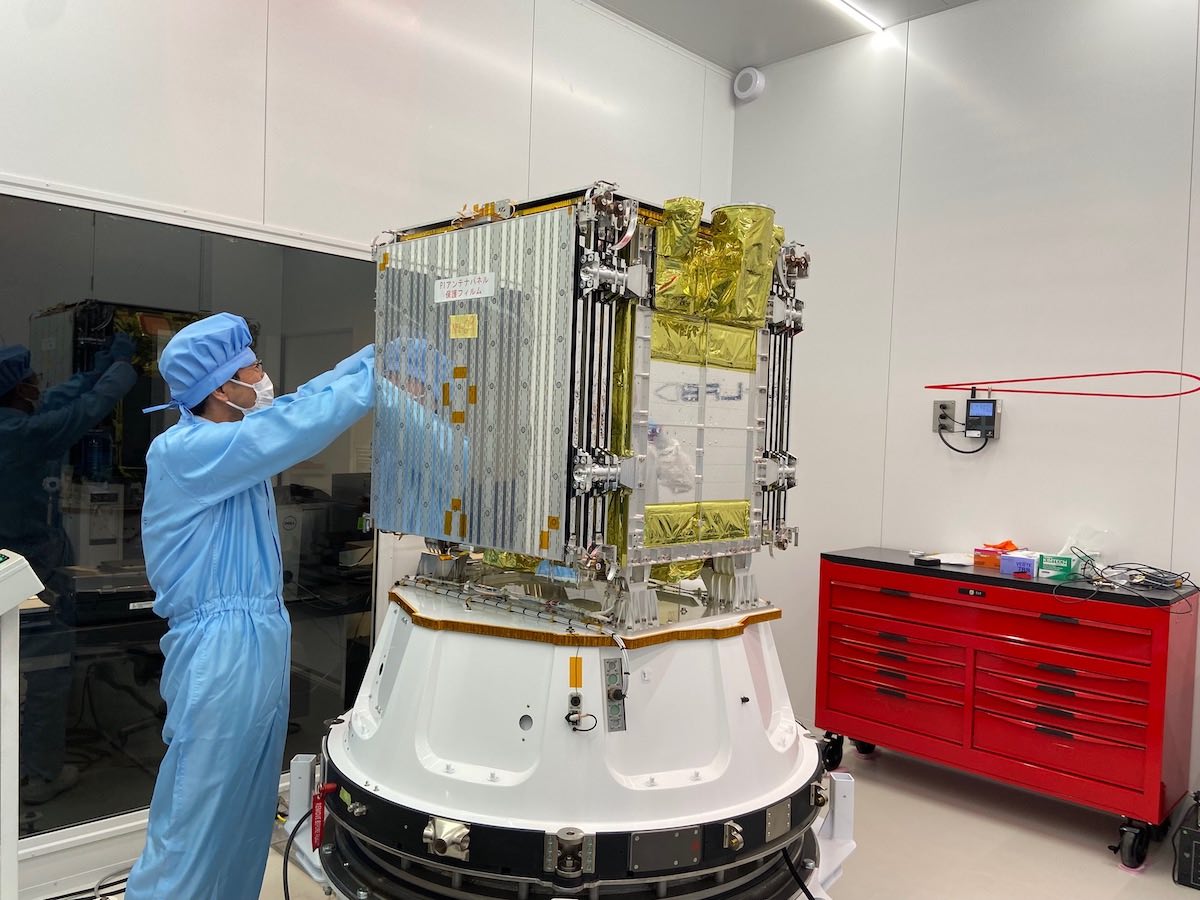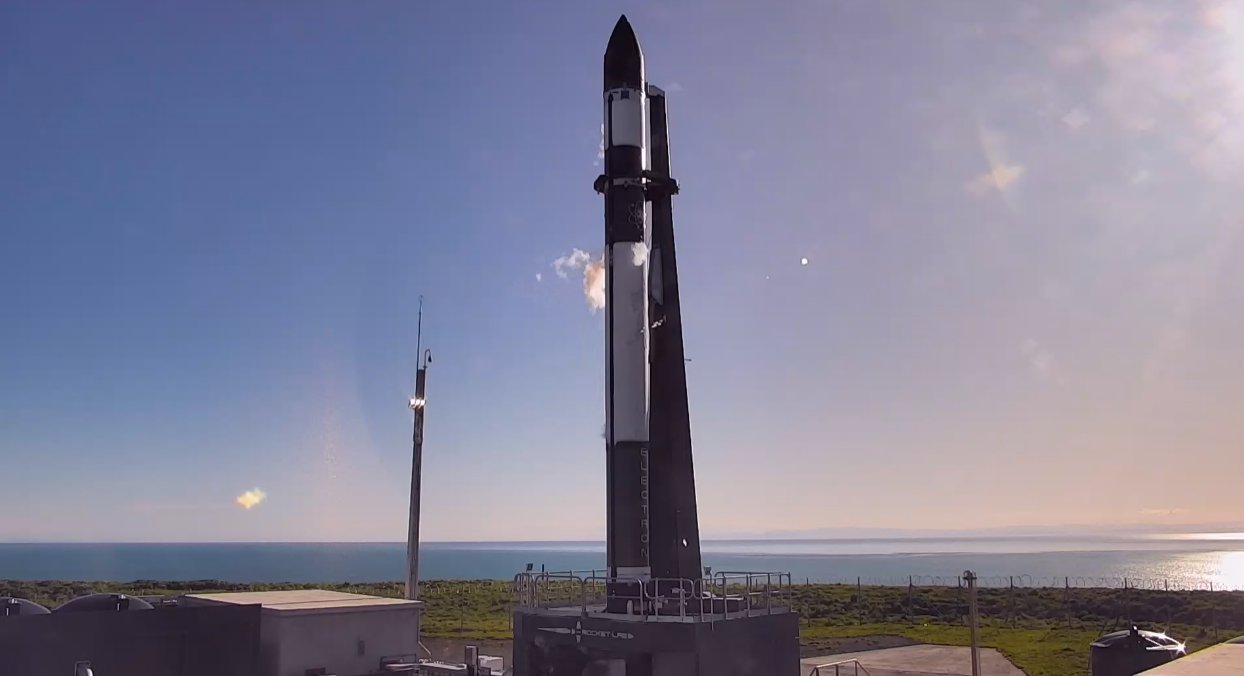
Rocket Lab is set to launch its 30th mission from New Zealand Thursday with a commercial Japanese radar remote sensing satellite. While the company does not plan to retrieve the Electron rocket on this mission, engineers recently test-fired an engine recovered from a flight recovered earlier this year, another step toward Rocket Lab’s goal of reusing first stage boosters.
The launch this week was scheduled for Wednesday, but Rocket Lab said Tuesday the flight would be delayed 24 hours to wait for a better weather forecast at the company’s privately-owned spaceport on Mahia Peninsula on the North Island of New Zealand.
The 15-minute launch window opens at 4:30 p.m. EDT (2030 GMT) Thursday. Rocket Lab’s two-stage, 60-foot-tall (18-meter) Electron launcher will take off from Launch Complex 1B with the StriX 1 radar observation satellite for Synspective, a Japanese startup company planning a fleet of 30 radar imaging spacecraft.
StriX 1 will be the first commercial satellite for Synspective, following the launch of two demonstration satellites on Rocket Lab missions in 2022 and in February of this year. Heading south from New Zealand, Rocket Lab’s second stage will propel the commercial payload into a preliminary transfer orbit, then a kick stage will ignite a low-thrust engine to maneuver into a near-circular orbit for deployment of the StriX 1 spacecraft about 54 minutes after liftoff.
The mission will target a polar sun-synchronous orbit at an altitude of about 350 miles (563 kilometers). StriX 1 will be the 150th satellite satellite delivered to orbit by Rocket Lab.
Synspective’s fleet of satellites will provide high-frequency, high-resolution images worldwide. Radar imaging satellites can resolve Earth’s surface in darkness and through clouds, giving Synspective and other companies with similar constellations an all-weather observing capability. StriX 1, like the two predecessor demonstration satellites, weighs around 200 pounds (100 kilograms), according to Synspective.
Its deployable X-band radar antenna, measuring 16 feet (5 meters) across once unfurled, can see features on Earth’s surface as small as 3 feet, or 1 meter.
The antenna and the satellite’s solar arrays are stowed for launch to fit inside the Electron rocket’s payload fairing. Rocket Lab designed a custom design payload shroud to accommodate Synspective’s cube-shaped satellites, which comes close to the limit of Electron’s payload capacity.
The mission launching StriX 1 is the second launch in a bulk buy of three Rocket Lab flights.

“From launching Synspective’s first demonstration spacecraft to now helping to build their SAR (synthetic aperture radar) constellation with this launch of their first commercial StriX satellite, it’s an honor to once again be the trusted launch partner for Synspective,” said Peter Beck, Rocket Lab’s founder and CEO. “As the sole payload on this dedicated Electron launch, Synspective are able to build their constellation to a specific LTAN (local time of the ascending node) that couldn’t be achieved if StriX was launched on a rideshare mission with other satellites — a highly important differentiator when building a new satellite constellation.”
Synspective is one of numerous commercial companies developing remote sensing satellite constellations. The company says its radar satellites will provide near-real time imagery to help customers respond to natural disasters, survey natural resources, track urban activity, and monitor ship traffic, among other applications.
“Unlike the previous two satellites, which are classified as demonstration satellites, StriX 1 is our first pre-commercial satellite for full-scale business expansion,” Synspective said. “This is in anticipation of the production and operation of multiple satellites in the future, with improved batteries and faster downlink speeds to capture more data and meet the needs of a wide range of customers from government to the private sector.”
Synspective said it will launch three more satellites after StriX 1 by the end of 2023. The company aims to have its full constellation of 30 satellites orbit by 2026.
Rocket Lab will not attempt recover the Electron booster stage on the StriX 1 mission, but engineers continue to make progress in testing to prepare for future recoveries, and eventually the reuse, of first stage boosters.
Engineers test-fired one of the nine Rutherford main engines from an Electron booster recovered from a launch in Day. That mission was the first time Rocket Lab caught a descending booster under parachute with a helicopter. The aircraft released the rocket for a soft splashdown in the Pacific Ocean, and Rocket Lab raised the booster from the sea for return to New Zealand.

Rocket Lab’s first stage is powered by nine Rutherford engines. Each Rutherford engine consumes kerosene and liquid oxygen propellants to generate about 5,600 pounds of thrust at sea level.
The company announced Sept. 1 that it completed a full-duration, full-thrust test-firing of a refurbished engine from the launch in May. The engine passed all of the “rigorous acceptance tests” Rocket Lab performs for every engine, including 200 seconds of burn time and multiple restarts, the company said.
The refurbished engine “performed to the same standard of a newly-built Rutherford engine,” Rocket Lab said. The company doesn’t plan to fly the engine again, but will it will be a “life-leader” to support future Rutherford engine development.
“We’ve always been at the forefront of innovation with Electron, having pushed the boundaries of many technologies including carbon composites, electric turbo-pumps and 3D printed rocket engines. Now, we’re leading the pack once again bringing reusability to small launch vehicles,” Beck said.
“Being able to refly Electron with minimal refurbishment is the ultimate goal, and so the fact that the recovered components on this engine performed on the test stand with minimal rework is further validation that we’re on the right path,” Beck said. “If we can achieve this high level of performance from engine components recovered from the ocean, then I’m optimistic and incredibly excited about what we can do when we bring back dry engines under a helicopter next time.”
Rocket Lab plans to try again to catch an Electron booster on a mission later this year, with the goal of hauling the rocket back to land without releasing it into the ocean.
Email the author.
Follow Stephen Clark on Twitter: @StephenClark1.
from Spaceflight Now https://ift.tt/uAy6dbr
via World Space Info







0 comments:
Post a Comment